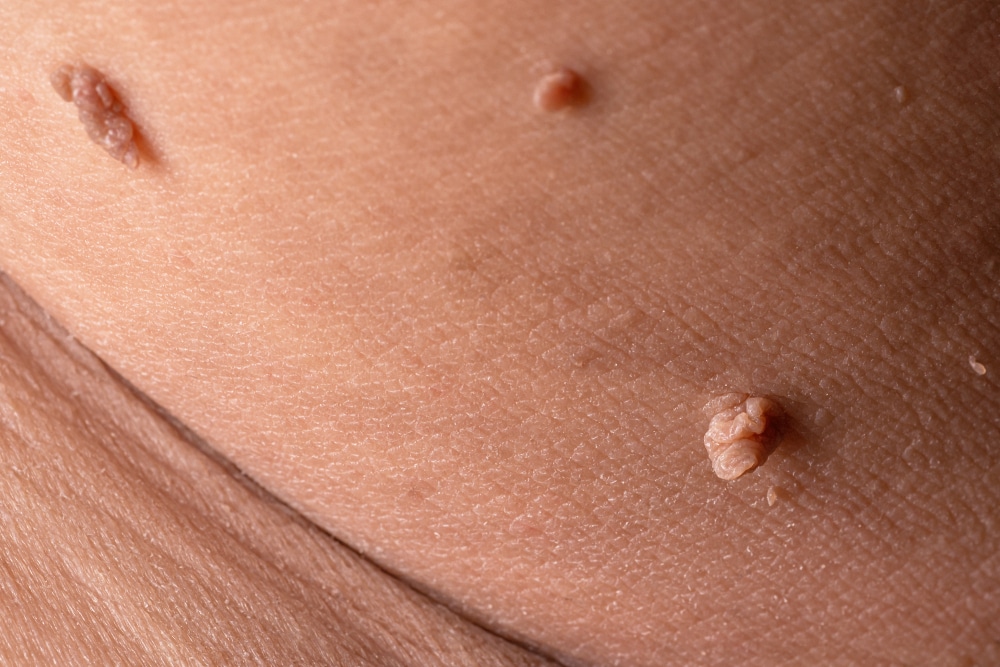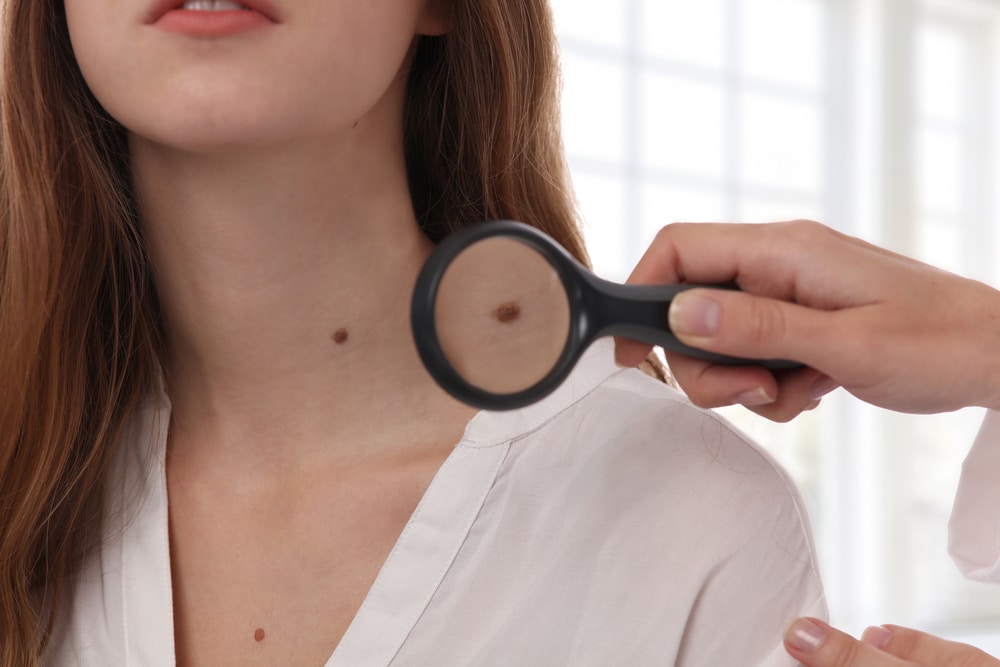To stay on top of your health, it's important to conduct frequent, at-home skin checks and schedule regular visits to your Dermatologist. By becoming familiar with your skin, you can catch any new or changing spots more quickly. Still, there may be an instance where you come across a skin tag or mole that you're unsure about. Here's how to tell the difference between the two and when you need to get a doctor's assessment.
How to Identify a Skin Tag or Mole
Skin tags are common, non-cancerous growths of varying sizes that usually present as soft, flesh-colored lesions connected to your skin by a stem-like, narrow stalk. Friction can play a role in their development, so they're often found in the natural folds of your skin, including under the arms, between neck creases, under the breasts, and in the groin area.
While skin tags are typically nothing to worry about, studies have shown they can be a sign of metabolic conditions. So, if you have several skin tags, your doctor may want to run a basic blood test.
Moles, on the other hand, aren't always benign. They occur when melanocytes—cells that form melanin—grow in a cluster instead of spreading throughout your skin, appearing as a flat or raised lesion.
There are three types of moles:
- Congenital: These are benign growths that are present at birth. They can be small (only a few millimeters), medium, large, or giant (taking up the entire surface of a body part).
- Acquired: This is a benign lesion that can develop at any age. The average person has about 10-40 acquired moles; notably, having 50 or more increases your risk of melanoma. These growths can be flat or raised, skin-colored, pinkish, tan, shades of brown, or even blue. They're usually smaller than 6 mm (about the size of a standard pencil eraser), with symmetric, round borders, and even color throughout.
- Atypical: These kinds of moles can be larger than 6 mm, asymmetric, have jagged borders, or have an irregular color pattern. An atypical mole may look like a skin cancer called melanoma, but it's benign.
Moles are genetic and can occur anywhere on the body, from head to toe. For the most part, moles stay put, minding their own business on whatever region of skin they've called home. Other times, moles can change in appearance because they're irritated or due to aging. Yes, moles get older too! As you age, your moles can become a bit more raised or faded in color.
You should keep an eye on a changing mole. If your mole is asymmetrical, multi-colored, lacks a defined border, or is growing and stretching, make an appointment with your Dermatologist.
How to Remove Skin Tags or Moles
If your skin tag or mole is a cause for concern—or you just don't like the way it looks—it can be removed by a physician. Unfortunately, you can't prevent these growths from appearing, but usually, they're just a mild nuisance. If your skin tag or mole is irritated or injured, ask a board-certified Dermatologist about removal. Do not attempt to remove them at home, as the risk of bleeding, infection, or missing a more serious skin growth increases. All moles that are removed by a doctor are sent off for biopsy, which is an integral part of your health check.
Your doctor may remove the skin tag with sterile scissors, liquid nitrogen (a cold spray), or electric cautery. Local anesthesia may be administered based on the size of the growth. In-office removal is generally quick, easy, and low risk.
Certainly, if a mole changes in appearance, removal of the lesion is the most prudent course. A doctor will discuss the risks versus benefits of removal, review your medical history, perform an exam, evaluate your risk of scarring, and help guide your decision further with their insight.
If you elect to remove your mole, here's what you can expect: Small, benign, acquired moles are most often removed in an office setting with a local anesthetic. The procedure may or may not involve stitches, but it's relatively quick, and patients are back to business as usual very soon. Larger or cancerous spots may require more involved surgery that can be done in an office, surgical center, or in some cases, a hospital. Most are outpatient, with a variable recovery time.
The best ways to ensure your skin is in good health include the daily use of a broad-spectrum sunscreen with an SPF of 30 or higher, monthly self-skin exams, and total body skin checks by board-certified Dermatologists. Once you have established a relationship with a Dermatologist, they can help to inform you—should any skin issue, skin tag or mole removal included—arise.

